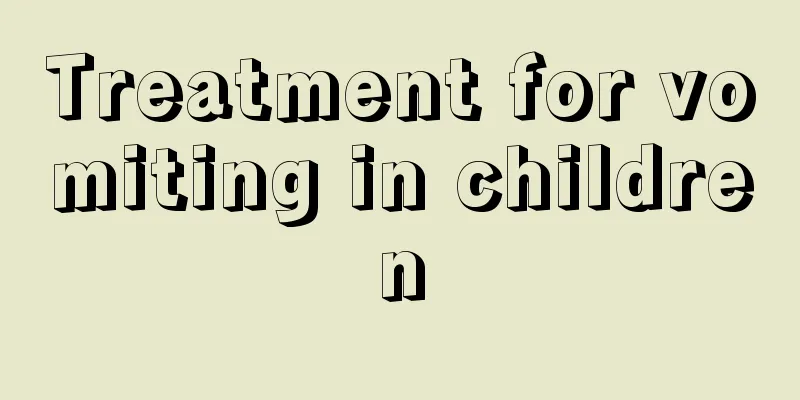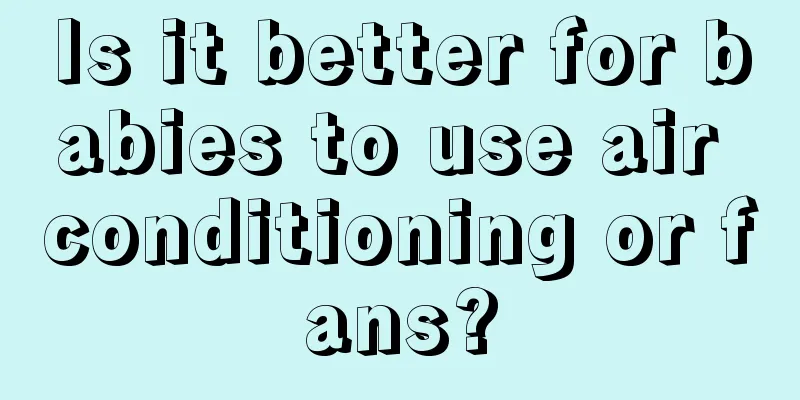What is the reason why my baby has a fever and hot hands and feet?

|
Young babies have low disease resistance because many of their body functions are not yet perfect. Therefore, they are prone to fever. Their hands and feet are obviously hot. At this time, parents should take some physical cooling measures and not let the baby stay in a high fever state for a long time. At the same time, they should find the cause based on the baby's situation. The following are the causes of this symptom. First, what is the reason for the baby's fever and hot hands and feet? The causes of fever are quite complex and can be roughly divided into the following categories: 1. Infectivity: This includes acute infections caused by viruses, bacteria, rickettsia, protozoa, spirochetes, fungi, etc. Upper respiratory tract infections, bronchitis, pneumonia, sepsis and various acute infectious diseases are all common causes of fever. 2. Non-infectious: ● Sterile tissue is destroyed or necrotic: Such as leukemia, intravascular embolism, burns, fractures, hematomas, absorption of blood in the abdominal or thoracic cavity, etc. ●Massive blood or water loss: It can reduce the effective blood circulation volume and cause heat dissipation disorders, thereby increasing body temperature. However, if circulatory failure occurs, normal metabolism will stagnate, and too little heat will be produced, so the body temperature will not rise. Second, what should I do if my baby has a fever and hot hands and feet? 1. Cold compress If a high fever is too much for you to handle, you can use cold compresses to help lower your body temperature. Place a cold wet towel on your forehead, wrists, and calves, and cover other parts of your body with clothing. When the cold compress reaches body temperature, it should be changed and repeated until the fever subsides. You can also wrap ice cubes in a cloth bag and place it on your forehead. 2. Hot compress If the body temperature is not too high, you can use hot compress to reduce the fever. Use a hot, wet towel to repeatedly wipe the patient's forehead and limbs to dissipate heat from the body until the fever subsides. However, if the body temperature rises above 39°C, do not use hot compresses to reduce the fever. Instead, use cold compresses to prevent the body temperature from continuing to rise. 3. Wipe your body Evaporation also has a cooling effect. Experts recommend using cool running water to help dissipate excess heat from the skin. Although you can sponge your entire body, pay special attention to areas where your body temperature rises, such as your armpits and groin. After squeezing out excess water from the sponge, wipe one area at a time, keeping the rest covered with clothing. Your body heat will evaporate this water, helping to dissipate the heat. 4. Take a bath Sometimes, there's nothing more relaxing than a warm bath. It can also help relieve fever symptoms. Babies should be bathed in warm water or wrapped in a wet towel, which should be changed every 15 minutes. Third, what should you pay attention to when your baby has a fever and his hands and feet are hot? 1. Never let your child take aspirin ●Teens under the age of 18 should never take aspirin. Because aspirin can cause a fever in children to develop Reye's syndrome, a fatal neurological disease. ●Children can use paracetamol instead. Calculate the dosage based on 5-7 mg per pound of body weight and take once every 4 hours. ●Remember, increasing the frequency of use or exceeding the appropriate dosage may be dangerous, so you must take the drug under the guidance of a doctor. 2. Pay attention to wearing appropriate clothes ●If you feel very hot, take off excess clothing to allow the heat in your body to dissipate. ●But if this makes you shiver, it means you are not wearing enough clothes and you should add more clothes until you are no longer cold. 3. Don’t rush to cool down ●If the doctor determines that you just have a cold, it is best not to rush to take antipyretics within your tolerance range. ●If you use medicine to reduce fever at the beginning of a cold (37-38.5℃), the bacteria in your body will be temporarily put into a state of suspended animation and become resistant to the medicine. Once the disease resurfaces, it is often more difficult to treat. |
<<: What could be the reason for high blood levels in babies?
>>: What is the reason why children cry? These factors are the most common!
Recommend
What are the symptoms of potassium deficiency in children?
Potassium is an essential trace element for the h...
What are the symptoms of common childhood diseases?
Everyone should be familiar with common pediatric...
Does fumigation with vinegar have any effect on newborns?
We all know that the bodies of newborns are relat...
Baby malnutrition
When the body is malnourished, it is easy to caus...
How should tracheitis be treated in children?
Bronchitis often occurs in children in late autum...
At what month is it better to add complementary food to babies?
The baby's body is very fragile, so the baby ...
What to do if your baby spits up milk like a fountain
The baby's every move concerns the parents. T...
What is the reason for the child's yellow hair
Children's dry and yellow hair is mostly caus...
What should I do if my three-month-old baby has a stuffy nose and cough?
Because children's physical development is no...
What is phimosis in children?
The health of the genitals should be paid attenti...
What are the causes of urticaria in children?
Infants and young children are prone to urticaria...
Overview of baby's one-year-old development indicators and intellectual development
A one-year-old baby goes through a critical turni...
Normal values of myocardial enzymes in children
Myocardial enzymes are mainly distributed in the ...
What should I do if my child has a fever of 38.5 degrees?
Nowadays, most families have only one child, and ...
What causes sacrococcygeal teratoma in newborns?
I believe that many parents do not want to see sa...









